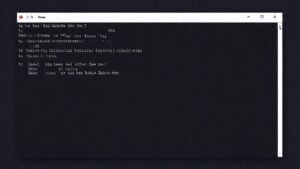Mass shooting prevention: Lessons from a Minneapolis church incident
- THE MAG POST

- Aug 31
- 4 min read

Mass shooting prevention in practice: lessons from a Minneapolis incident
When diaries become evidence, the line between rumor and risk blurs. This case prompts a closer look at how communities detect, discuss, and deter violence while preserving dignity for victims and survivors.
Diaries, secrecy, and the power of digital breadcrumbs
In the Minneapolis event, the perpetrator described a plan in diaries and on a private channel before the attack, and some entries used Cyrillic lettering to obscure intent. These digital breadcrumbs illustrate how early signals can surface in text, video, or search history. For researchers and safety professionals, such material offers insight into intent formation, access to weapons, and the social dynamics that shield a plot from those around the would-be actor. Yet translating those signals into timely action requires careful balance between privacy, accuracy, and prevention. Mass shooting prevention depends on recognizing patterns without stigmatizing communities or over-medicating fear.
Ethics of publishing private materials in the wake of tragedy
Media outlets face a central dilemma: reveal information that could prevent future harm while honoring the privacy and trauma of victims. Publishing diaries or channel content can inform risk assessment, yet it risks sensationalism, copycat behavior, and retraumatization. Responsible reporting advocates for context, verification, and caution about how much detail is shared. In the long run, clear editorial standards and collaboration with law enforcement and researchers help convert raw data into protective knowledge that supports mass shooting prevention without glamorizing the attacker.
Security gaps and institutional responsibilities
Public spaces rely on a hierarchy of security measures and community vigilance; missteps can leave gaps exposed to exploitation.
Balancing security with civil liberties
Efforts to harden spaces must honor civil liberties, avoid profiling, and ensure that security protocols do not erode trust in institutions. The Minneapolis incident underscores how policies around surveillance, access control, and incident drills can be improved without infringing on individual rights. Effective mass shooting prevention blends targeted risk assessment, staff training, and clear reporting channels with respect for privacy and due process.
Crisis response time and triage
When a threat emerges, the speed and quality of crisis response determine outcomes for bystanders and staff. Schools and religious institutions benefit from rehearsed drills, rapid notification systems, and coordination with local responders. This incident shows the value of pre-planned communication, mutual aid agreements, and after-action analyses that distill lessons into practical improvements. The aim is faster containment, clearer information, and minimized harm while sustaining trust in the community.
Preventive frameworks and policy implications
Policy decisions shape how signals are tracked, shared, and acted upon across sectors.
Threat assessment and community reporting
Mass shooting prevention relies on structured threat assessments, where credible concerns are evaluated without overreacting to ambiguous signals. Encouraging community members to report suspicious behavior requires safe, accessible channels, public education, and protections against retaliation. By translating diary-like signals into standardized risk indicators, institutions can intervene earlier and reduce the likelihood of violence without stigmatizing communities or individuals.
Digital breadcrumbs and data-to-action
Digital footprints—social media content, diary notes, or video uploads—offer a composite picture of intent. Equally, they raise questions about data quality, verification, and the potential for misinterpretation. Mass shooting prevention benefits from cross-disciplinary teams that combine investigative journalism, data science, and law enforcement to verify leads and translate signals into preventive steps. The result is a more proactive culture that can respond before violence occurs, while maintaining ethical standards and public trust.
Measured reporting and resilience
Public communication after a violent incident should inform and empower without sensationalizing the subject or causing unnecessary alarm.
Pros and cons of public accountability
Public accountability drives improvements in safety policies, but it can also create a feedback loop that magnifies fear or sensationalizes the attacker’s methods. Responsible coverage emphasizes a focus on victims, context, and preventative strategies rather than lurid details. For mass shooting prevention, journalists and researchers should be consistent about what is disclosed, how it is framed, and how the information will be used to guide policy and practice.
Building resilience without sensationalism
Resilience rests on credible information, clear guidance, and practical steps that communities can implement. Schools and faith centers benefit from preventative playbooks, community training, and transparent communication that avoids glamorizing violence. By centering safety, education, and collaboration, we can advance mass shooting prevention while preserving trust, reducing anxiety, and strengthening social cohesion.
Key Takeaways: actionable paths for safer communities
Practical steps for communities
Mass shooting prevention benefits from early warning systems that are user-friendly for neighbors, teachers, and faith leaders. Establish clear reporting channels, protect whistleblowers, and train staff to recognize harmful patterns without profiling. When a diary or online post signals potential harm, multidisciplinary teams should evaluate risk within a standardized framework, balancing privacy with safety. Campaigns to educate communities about warning signs and safe ways to report can reduce delays between intent and action, improving outcomes while preserving civil liberties.
Future research directions
Future work should quantify the reliability of digital breadcrumbs, refine risk indicators that distinguish genuine threats from miscommunication, and study how media coverage influences behavior. Collaboration across journalism, criminology, psychology, and data science can yield practical tools for prevention, including ethical guidelines for publishing sensitive material. By aligning research with policy, we can strengthen mass shooting prevention without compromising trust or inflaming public fear.
Topic | Key Points |
Incident Overview | Summary of the church attack and immediate aftermath; two fatalities, multiple injuries; context in Minnesota. |
Preventive Signals | Diaries and digital footprints can contribute to mass shooting prevention when interpreted with care, balancing privacy with safety. |
Media Ethics | Publishing sensitive diaries vs. public safety; responsible journalism and open-source verification. |
Policy Implications | Threat assessment, reporting channels, and balancing civil liberties with security measures; community resilience. |






















































Comments